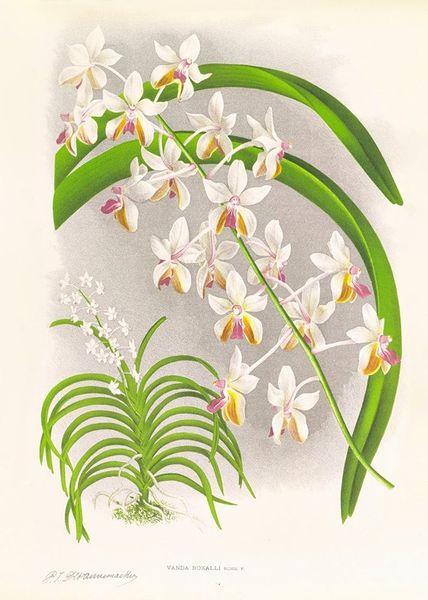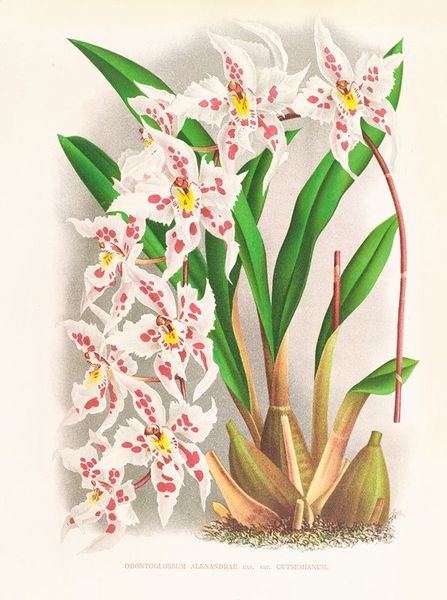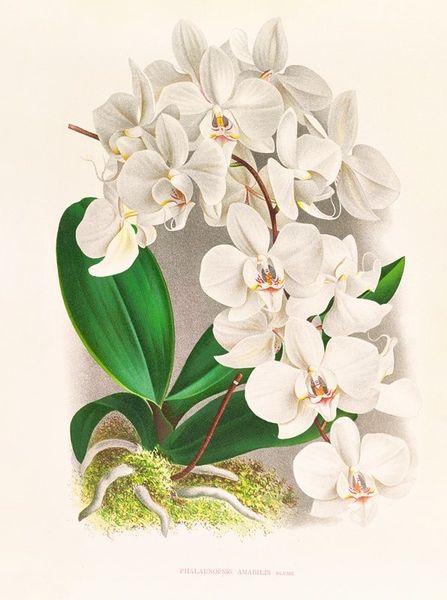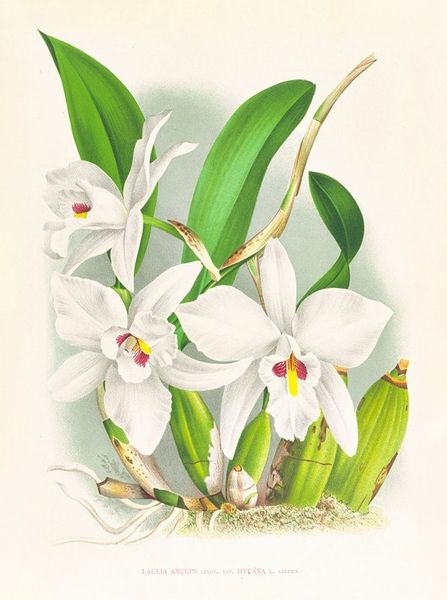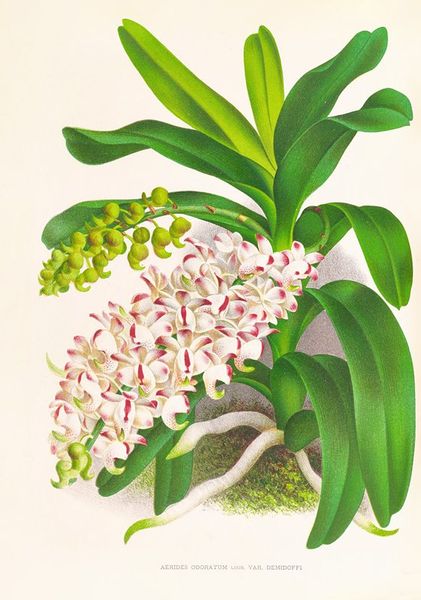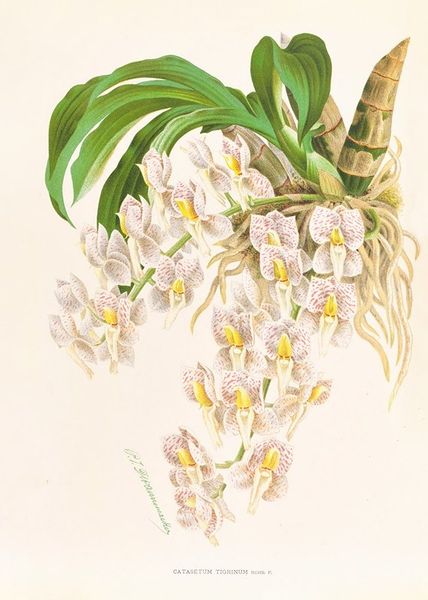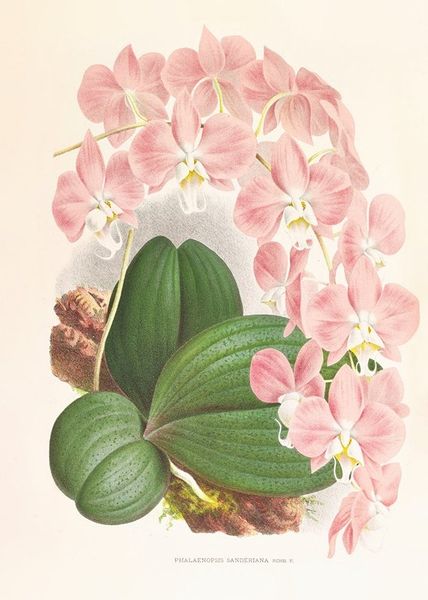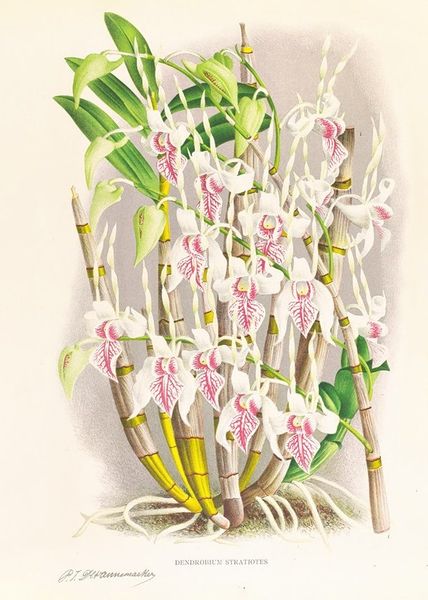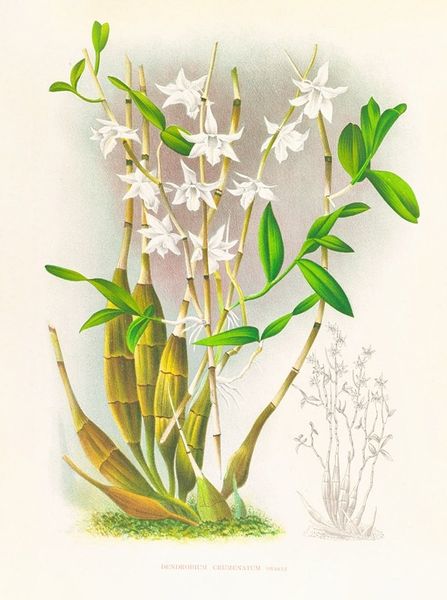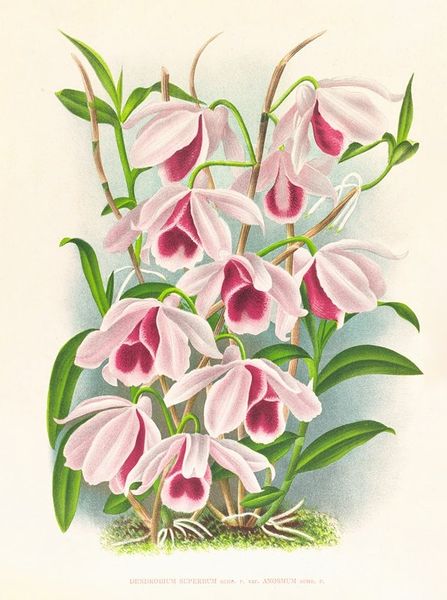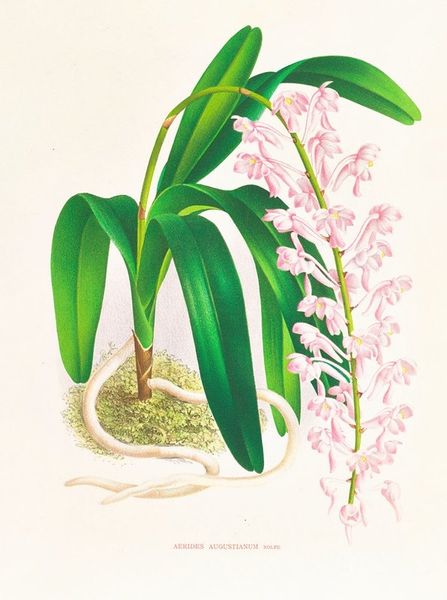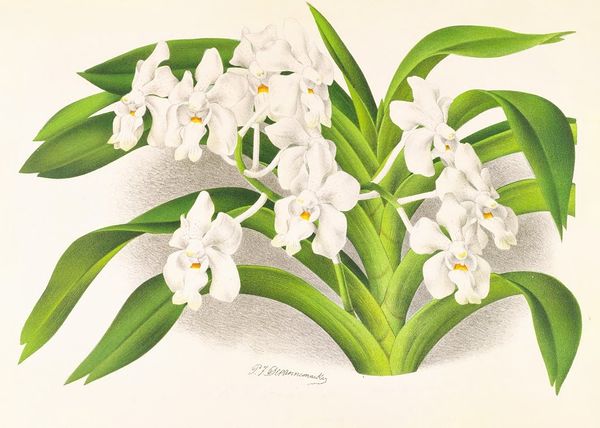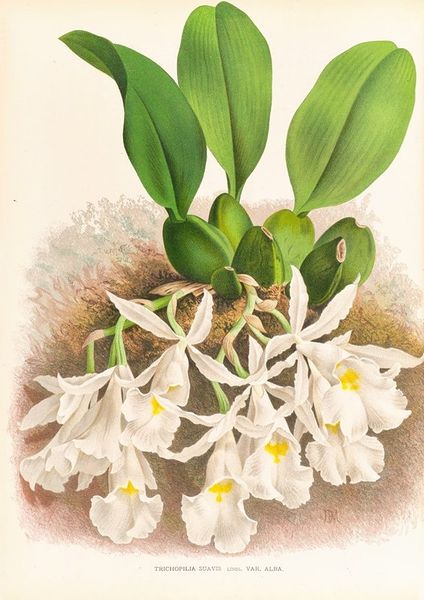
Copyright: Public Domain: Artvee
Editor: This is Jean Jules Linden's "Phalaenopsis Stuartiana," a watercolor painting likely completed between 1885 and 1906. There's such a delicate quality to the petals and those striking patterned leaves – almost ethereal, wouldn't you say? How do you read this artwork? Curator: Well, on the surface, it's a beautiful botanical illustration, clearly rooted in Romanticism. But consider the historical context. The late 19th century was a period of intense colonial expansion and scientific exploration. Botanical illustrations like these were often commissioned by wealthy Europeans eager to catalogue and possess the exotic flora of colonized lands. So, whose gaze are we really seeing reflected in this seemingly objective scientific depiction? Editor: That's a compelling point. It shifts the reading from a purely aesthetic appreciation to one of power and control. Curator: Precisely. And notice how the orchid, a symbol often associated with femininity and luxury, is rendered with such detail and precision. Could this be interpreted as a visual metaphor for the ways in which women, too, were objectified and commodified within patriarchal and colonial structures? What are your thoughts on that? Editor: I hadn’t thought of it that way, but it makes a lot of sense. The orchid becomes a symbol of both beauty and exploitation. The rigid detail suggests a kind of... pinning down, almost like an insect in a display. Curator: Exactly. So, even a seemingly innocent botanical illustration can reveal complex power dynamics and shed light on the cultural anxieties of its time. By looking at it this way, it asks more than simple aesthetic observation of us. Editor: I'll definitely look at these kinds of illustrations differently now, considering the broader political landscape. Curator: That's the goal; by looking beyond the immediate impression, we can foster a deeper understanding of both the artwork and the world it reflects.
Comments
No comments
Be the first to comment and join the conversation on the ultimate creative platform.
